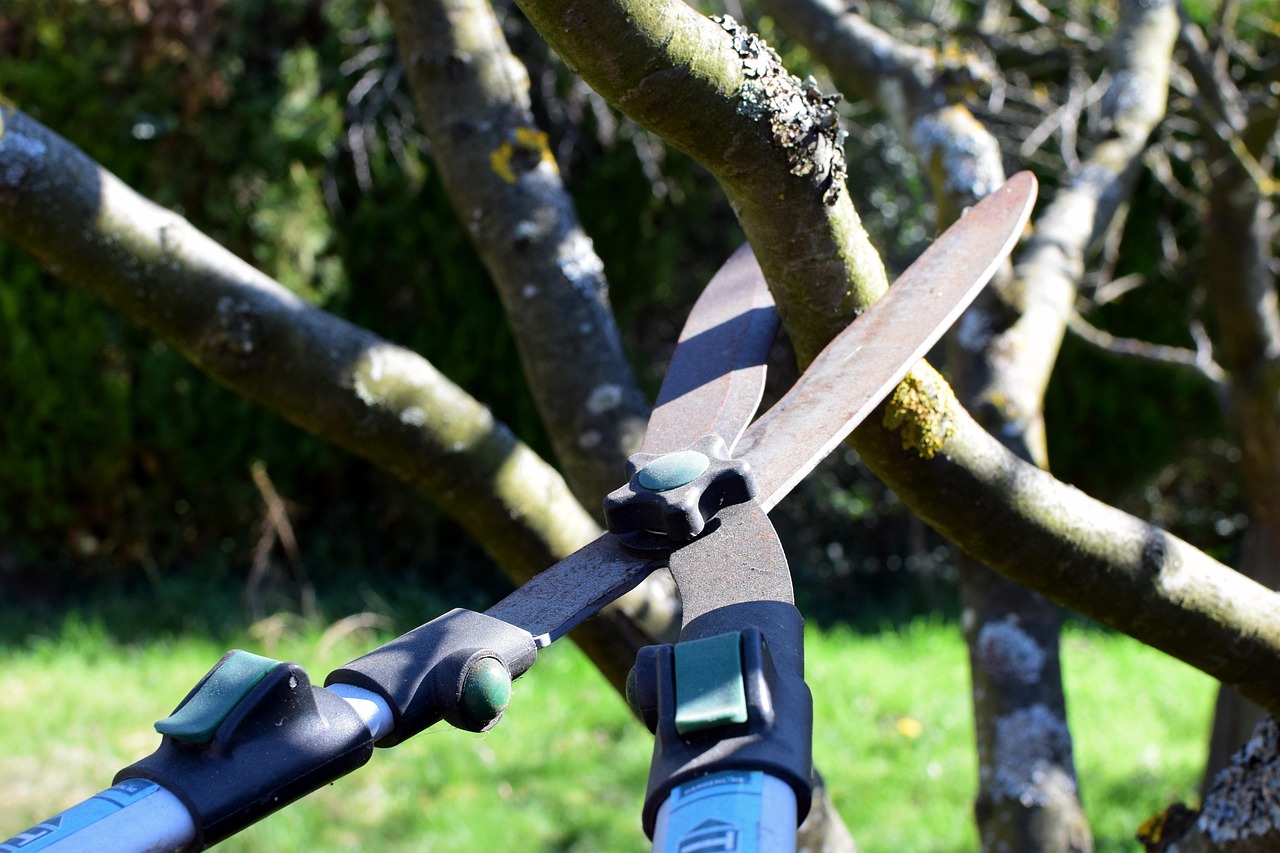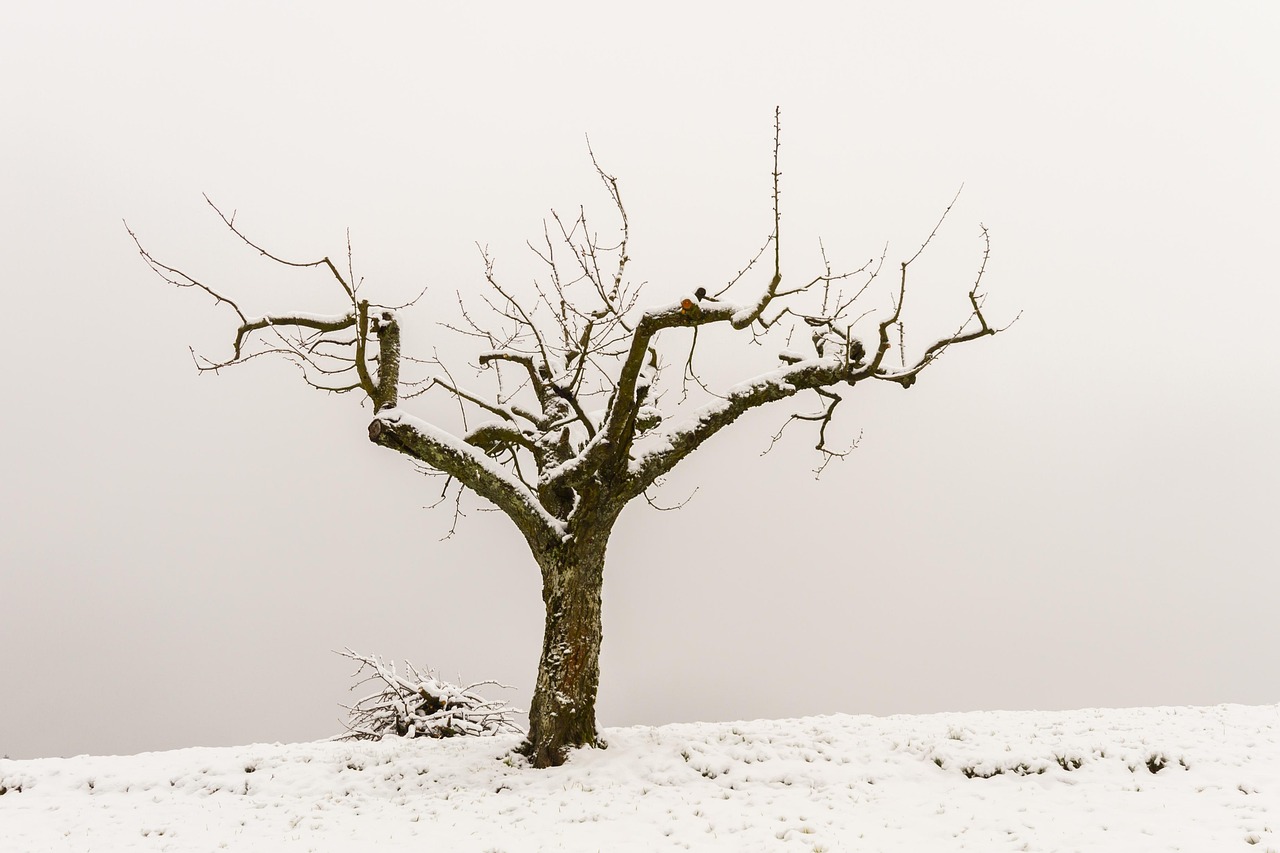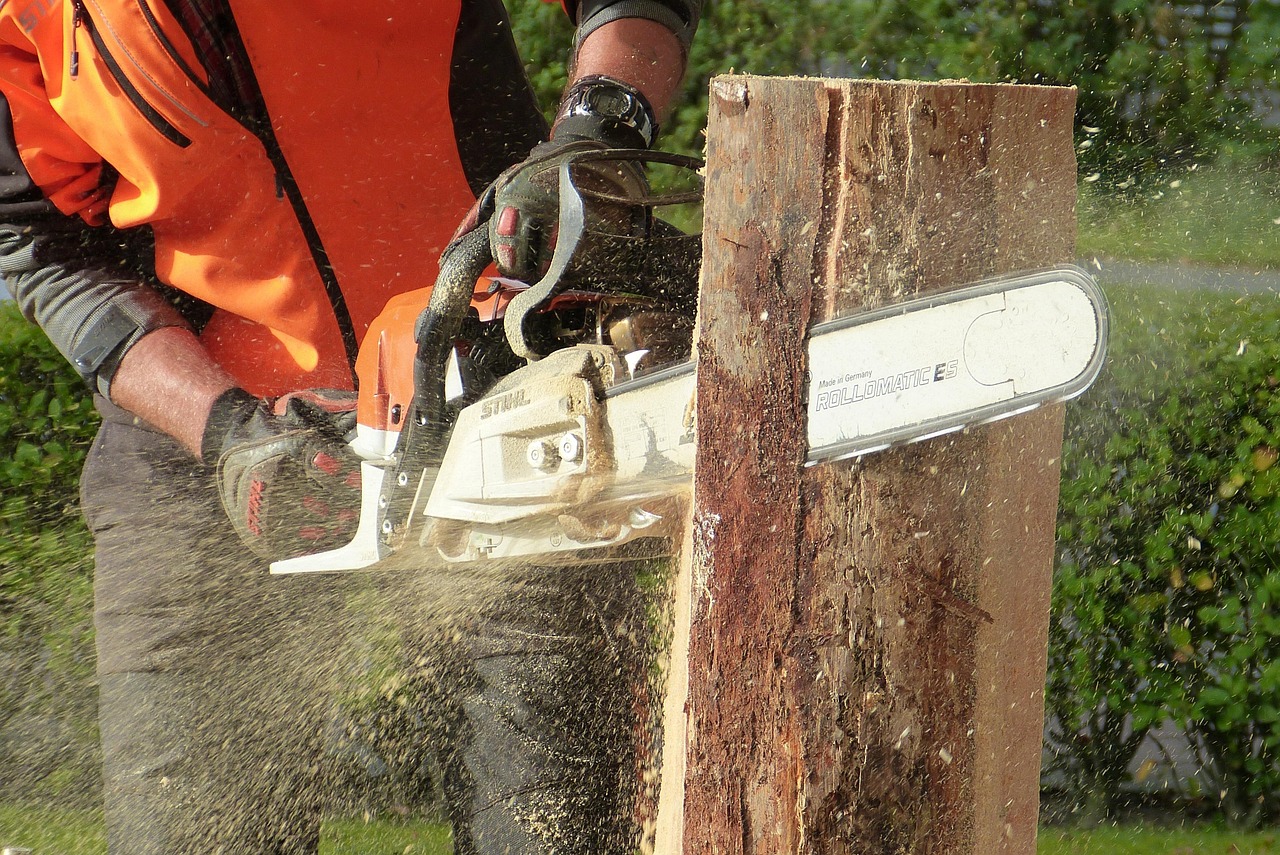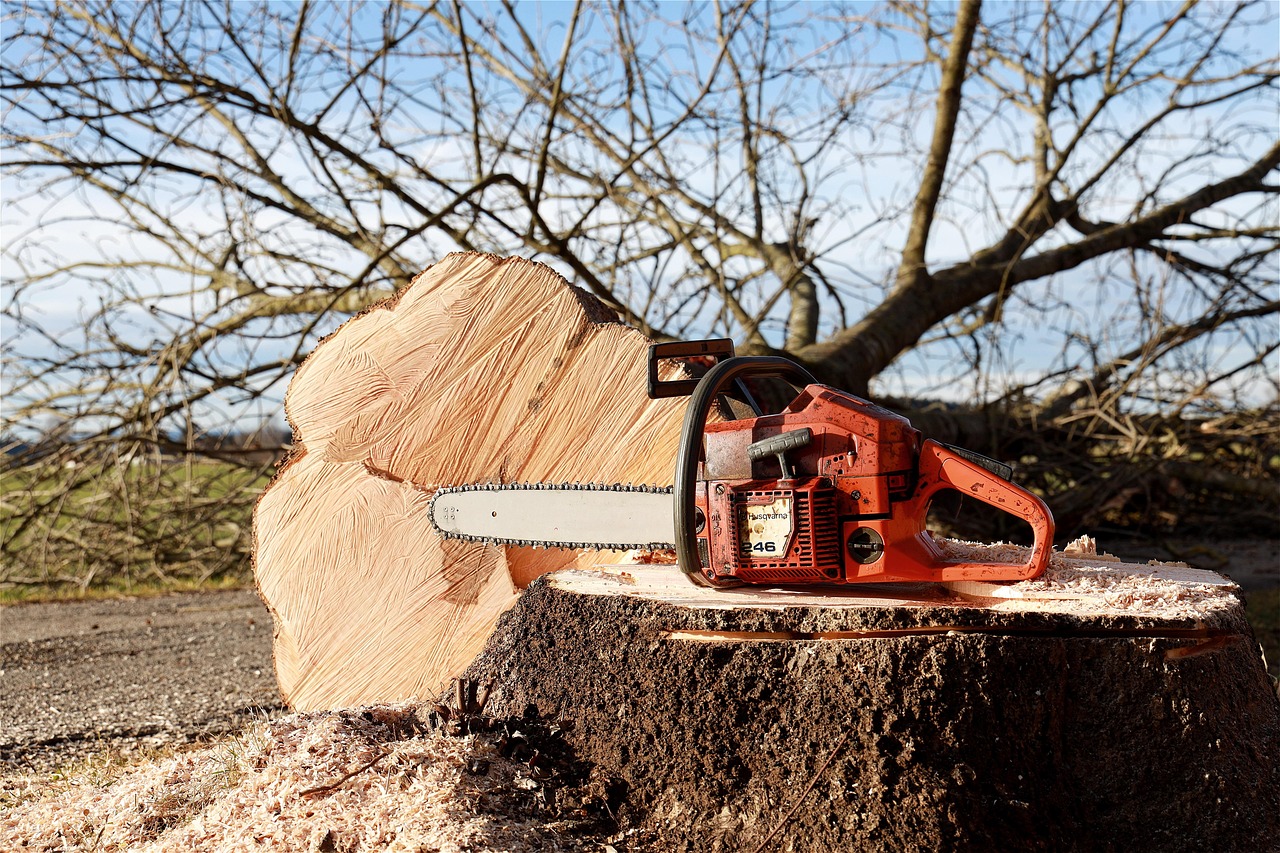Urban tree pruning is essential to prevent damage to sidewalks. Regular maintenance ensures tree branches do not encroach on pedestrian pathways, thereby reducing hazards and promoting safety. Proper pruning techniques help maintain tree health while minimizing infrastructure issues.
In urban environments, trees play a vital role in enhancing the aesthetic appeal and improving air quality. However, as trees grow, their branches can extend over sidewalks, creating potential hazards for pedestrians. Unpruned trees can lead to sidewalk cracking, uneven surfaces, and even injury. Therefore, effective tree pruning is necessary not only for the health of the tree but also for the safety of the community.

Sidewalk damage can occur due to several factors related to tree growth. Tree roots can push up the pavement, causing it to crack and become uneven. Additionally, low-hanging branches can obstruct pedestrian traffic and increase the risk of accidents. To mitigate these issues, urban planners and city maintenance teams must prioritize regular pruning practices.
Understanding Urban Tree Pruning
Tree pruning involves the selective removal of certain parts of a tree, including branches, buds, and roots. This practice is essential for maintaining tree health and ensuring safety in urban settings. There are various reasons for pruning trees in cities:
- Safety: Removing low-hanging branches prevents accidents.
- Health: Pruning helps eliminate diseased or damaged branches.
- Growth Control: It manages the size and shape of the tree.
- Aesthetic Appeal: Properly pruned trees enhance the visual environment.
Pruning should be conducted at specific times of the year to ensure the best results. Generally, late winter or early spring is considered the ideal time for most species. This timing allows trees to heal quickly before the growing season begins. However, some species may have different requirements, so it is crucial to research the specific needs of local tree varieties.

Impact of Tree Growth on Sidewalks
The relationship between urban trees and sidewalks is complex. As trees grow, their roots expand and can exert pressure on surrounding pavement. This pressure often causes cracks and heaves in sidewalks, leading to dangerous walking conditions. A few key points about this impact are:
| Impact Type | Description |
|---|---|
| Cracking | Roots push against pavement, creating fissures. |
| Heaving | Uneven growth leads to raised sidewalk sections. |
| Obstruction | Overhanging branches block pathways. |
Proactive measures are necessary to address these issues. Through proper pruning and regular maintenance, city officials can help reduce sidewalk damage caused by tree growth. It is important for municipalities to develop comprehensive urban forestry plans that include guidelines for effective pruning techniques.
Best Practices for Urban Tree Pruning
When it comes to pruning urban trees, several best practices should be followed to ensure effectiveness and safety:

- Assess the Tree: Evaluate the health and structure before pruning.
- Use Proper Tools: Ensure tools are clean and sharp to make clean cuts.
- Follow Pruning Techniques: Use appropriate techniques such as thinning or crown reduction.
- Avoid Over-Pruning: Remove only what is necessary to maintain health and safety.
The benefits of following these practices are significant. Effective pruning can prolong the life of a tree, enhance its beauty, and protect infrastructure from damage. By ensuring that trees are properly maintained, cities can create safer walking environments for residents.
In addition to regular pruning, it is essential to monitor the growth of urban trees continuously. This ongoing assessment allows city planners to make informed decisions about tree management and sidewalk maintenance. Community involvement in tree care initiatives can also foster a sense of ownership among residents, leading to better adherence to maintenance practices.
Ultimately, urban tree pruning is not just about maintaining aesthetics; it’s about ensuring public safety and preserving infrastructure. By understanding the importance of this practice, cities can create vibrant, safe environments that benefit both residents and local ecosystems.

Common Tree Species and Their Pruning Needs
Understanding the different species of trees in urban environments is crucial for effective pruning. Each species has unique characteristics, growth patterns, and specific needs when it comes to pruning. Here are some common tree species found in urban areas, along with their pruning requirements:
| Tree Species | Pruning Requirements |
|---|---|
| Maple | Best pruned in late winter to avoid sap loss. |
| Oak | Prune in late summer to minimize stress and avoid oak wilt. |
| Pine | Prune in late winter or early spring, focusing on dead or damaged branches. |
| Cherry | Prune after flowering to avoid loss of blooms. |
Each tree species requires a tailored approach to pruning. For instance, maples tend to bleed sap when pruned too early in the season, while oaks are susceptible to disease if pruned at the wrong time. Understanding these intricacies helps ensure healthy growth and minimizes potential damage to sidewalks and other structures.
Pruning Techniques for Urban Trees
Implementing the right pruning techniques is essential for maintaining tree health and safety. Here are some commonly used methods:
- Thinning: This technique involves removing selected branches to increase light penetration and air circulation within the tree’s canopy.
- Crown Reduction: This method reduces the size of the tree’s crown while maintaining its natural shape. It is particularly useful for trees that may obstruct pathways.
- Deadwooding: This involves removing dead or dying branches to prevent them from falling and causing injury.
- Structural Pruning: Focuses on developing a strong branch structure early in a tree’s life, which can reduce future maintenance needs.
Each technique serves a distinct purpose and should be applied based on the specific situation and requirements of the tree. Proper training in these techniques is essential for anyone involved in urban tree maintenance.
The Role of Technology in Tree Pruning
Modern technology plays a significant role in enhancing tree management practices. Various tools and innovations can aid in improving the efficiency and effectiveness of urban tree pruning:
- Drones: Drones equipped with cameras can assess tree health from above, identifying areas that require attention.
- Sensors: Soil moisture and health sensors help determine when trees need pruning or care based on environmental conditions.
- Mapping Software: Geographic Information Systems (GIS) can track tree locations, species, and pruning history, allowing for better planning and management.
The integration of technology in urban forestry creates opportunities for more informed decisions. By using data-driven approaches, city planners can allocate resources more efficiently and prioritize areas that require immediate attention.
Challenges of Urban Tree Pruning
While urban tree pruning has numerous benefits, several challenges can complicate the process. Some of these challenges include:
- Limited Access: Trees located near busy streets or in tight spaces may be difficult to access for pruning equipment.
- Funding Constraints: Budget limitations can hinder regular maintenance and pruning schedules.
- Lack of Knowledge: Insufficient training among maintenance personnel can lead to improper pruning techniques.
- Public Perception: Residents may oppose tree removal or heavy pruning due to aesthetic concerns.
Addressing these challenges requires collaboration between city officials, residents, and tree care professionals. Community education programs can raise awareness about the importance of proper pruning methods and the benefits of maintaining healthy trees.
Community Involvement in Urban Tree Pruning
Engaging the community in urban tree care initiatives fosters a sense of ownership and responsibility. Communities play a vital role in supporting local tree maintenance efforts through various activities:
- Volunteer Programs: Organizing community volunteer days for tree planting and pruning can enhance participation.
- Workshops: Hosting educational workshops on proper pruning techniques encourages residents to participate actively in tree care.
- Adoption Programs: Tree adoption programs allow residents to take responsibility for the care of specific trees, fostering pride in their local environment.
Through community involvement, cities can cultivate a culture of care that emphasizes the importance of urban trees. This collective effort not only enhances the urban landscape but also contributes to public safety and environmental sustainability.
The combination of proper pruning techniques, community engagement, and technological advancements paves the way for healthier urban forests. As cities continue to evolve, maintaining the balance between nature and infrastructure remains essential for creating safe living environments.
Legal and Regulatory Considerations in Urban Tree Pruning
Urban tree pruning is not only a matter of aesthetics and safety; it also involves legal and regulatory considerations. Municipalities typically have guidelines and regulations governing tree maintenance, which can vary by location. Understanding these regulations is essential for both tree care professionals and community members.
Some common legal aspects to consider include:
- Permits: Many cities require permits for tree pruning, especially for large trees or those located in public spaces.
- Protected Species: Certain tree species may be protected by local ordinances. Pruning or removing these trees without permission can result in fines.
- Liability Issues: Property owners may be held liable for injuries caused by overhanging branches or damaged sidewalks. Proper maintenance can help mitigate these risks.
- Public Right of Way: Trees that are in or near public pathways may have specific pruning standards to ensure pedestrian safety.
By adhering to local regulations, cities can ensure that urban trees are managed responsibly, which benefits the community as a whole.
The Environmental Impact of Tree Pruning
Tree pruning plays a crucial role in maintaining the ecological balance within urban environments. Healthy trees provide numerous environmental benefits, including improved air quality, reduced urban heat, and enhanced biodiversity. However, improper pruning can lead to negative consequences for the environment.
Some key environmental impacts of tree pruning include:
- Soil Health: Proper pruning encourages healthy root systems, which stabilizes soil and prevents erosion.
- Wildlife Habitat: Trees support various wildlife species. Thoughtful pruning can maintain habitats while ensuring safety.
- Carbon Sequestration: Healthy trees absorb carbon dioxide, helping mitigate climate change effects. Pruning supports this by promoting vigorous growth.
- Water Management: Trees help manage stormwater runoff. Well-pruned trees can effectively take up more water, reducing flooding risks.
It is essential to approach tree pruning with an understanding of its environmental implications. Pruning should aim to enhance the tree’s health and maximize its ecological contributions.
Seasonal Considerations for Urban Tree Pruning
Timing is critical when it comes to pruning urban trees. Different seasons offer varying conditions that affect tree health and growth. Here are some seasonal considerations:
Winter Pruning
Winter is often considered the best time for pruning many deciduous trees. During this period, trees are dormant, which minimizes stress. Key points include:
- Reduced Sap Flow: Many trees experience less sap flow, reducing the risk of bleeding.
- Better Visibility: Without leaves, it is easier to assess the structure and identify branches that need removal.
Spring Pruning
Spring is suitable for certain species, particularly those that bloom later in the year. Considerations include:
- Avoiding Bloom Loss: Pruning before flowering can reduce blooms on certain flowering species.
- Health Monitoring: Early spring provides an opportunity to assess any winter damage.
Summer Pruning
Summer pruning can help control tree size and remove any unwanted growth. Important notes include:
- Stress Management: Avoid heavy pruning during hot weather to minimize stress on the tree.
- Pest Control: Summer is a good time to identify pests or diseases affecting the tree.
Fall Pruning
Fall is generally not recommended for most tree species due to potential stress but can be useful for specific cases:
- Dormant Trees: Some trees may benefit from light pruning as they prepare for dormancy.
- Pest and Disease Management: Removing affected branches can help prevent spread during winter months.
The Costs of Urban Tree Pruning
The cost of urban tree pruning can vary significantly based on several factors. Understanding these costs helps cities allocate their budgets effectively. Major cost considerations include:
| Cost Factor | Description |
|---|---|
| Tree Size | Larger trees typically require more time and equipment to prune, increasing costs. |
| Location | Trees in hard-to-reach places may incur higher labor costs due to equipment needs. |
| Disease Management | Treating diseased trees adds to overall costs through additional services required. |
| Frequency of Pruning | Trees that are maintained regularly may incur lower costs compared to those neglected for years. |
By understanding these factors, municipalities can better plan their tree management budgets and prioritize necessary maintenance activities. Investing in regular pruning will ultimately save costs related to sidewalk repairs and other infrastructure issues caused by uncontrolled tree growth.
The combination of legal considerations, environmental impacts, seasonal timing, and cost factors creates a complex framework for urban tree pruning. These elements must be carefully balanced to ensure the health of urban forests while safeguarding public spaces and infrastructure.
Future Trends in Urban Tree Pruning
As cities continue to grow and evolve, the approach to urban tree pruning is also changing. Several emerging trends are influencing how municipalities manage their urban forests.
- Sustainable Practices: There is a growing emphasis on sustainable tree care practices. This includes using organic treatments for pests and diseases, which minimizes chemical runoff into urban waterways.
- Community Engagement: More cities are actively involving local residents in tree care initiatives. This approach not only fosters a sense of ownership but also educates the community about the benefits of proper tree maintenance.
- Data-Driven Management: The use of data analytics and GIS technology is becoming prevalent. Cities are using data to track tree health, monitor growth, and schedule pruning more effectively.
- Integrated Urban Forestry: Urban forestry is being integrated into city planning processes. This holistic approach ensures that tree management aligns with overall city development goals.
These trends reflect a shift towards a more collaborative, informed, and environmentally conscious method of managing urban trees. As these practices become widespread, they will contribute to healthier urban ecosystems and safer communities.
Emerging Technologies in Tree Care
Technological advancements are revolutionizing the way urban tree pruning is conducted. Here are some innovative technologies that are shaping the future of tree management:
- Remote Sensing: Technologies like LiDAR (Light Detection and Ranging) allow for precise mapping of tree canopies and health assessments, making it easier to identify which trees need attention.
- Mobile Apps: Several mobile applications are designed to help residents report tree issues and access information about local tree species and care techniques.
- Robotic Pruners: Emerging robotic solutions are being tested for their potential in tree pruning, offering precision and efficiency in maintaining urban trees.
These advancements not only enhance the efficiency of tree care but also provide valuable data that can inform better management decisions. Incorporating technology into traditional practices can lead to improved outcomes for both trees and urban infrastructure.
Building a Tree-Centric Community
Creating a tree-centric community involves fostering an environment where residents prioritize and participate in tree care. This can be achieved through various community programs:
- Educational Campaigns: Cities can launch campaigns to educate residents about the importance of trees, proper pruning techniques, and how they can get involved.
- Partnerships with Local Organizations: Collaborating with local environmental organizations can enhance outreach efforts and provide resources for community members.
- Tree Festivals: Hosting events centered around trees can engage the community and promote awareness of urban forestry issues.
A strong community connection to local trees can lead to greater public support for urban forestry initiatives. When residents understand the value of trees, they are more likely to advocate for their maintenance and protection.
Conclusion
Urban tree pruning is essential for maintaining not only the aesthetic beauty of cities but also the safety and well-being of their residents. By effectively managing tree growth, municipalities can prevent sidewalk damage and enhance the overall quality of urban life. Understanding the unique needs of different tree species, employing proper pruning techniques, and considering legal and environmental factors contribute to successful urban forestry practices.
The integration of technology, sustainable practices, and community involvement paves the way for healthier urban forests. As cities continue to adapt to changing environments and urbanization challenges, a collaborative approach to tree care will ensure that urban trees thrive for future generations.
Ultimately, investing in urban tree pruning is investing in the safety, health, and beauty of our communities. By recognizing the importance of trees in urban settings, we can create vibrant environments that benefit both people and nature.
